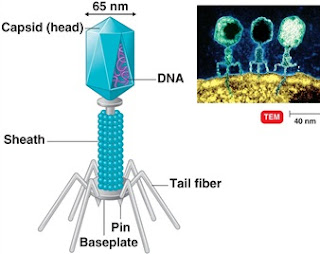They are inbetween. Viruses CANNOT be classified as living organisms because alone they cannot replicate, they need a host (another living cell) to replicate. They do not have cells. Biologically speaking they are non-living things.they do not have the same characteristics of a living organism.. They cannot do anything without a host. They cannot reproduce without a host, have an energy source, react to their environment, they can stay dormant for millions of years. This is why they are difficult to detect. They inject nucleic acid and attach themselves to a living organism. This question differs based on who you ask. In my opinion, they aren't alive.
I see viruses as packages of genes coated in protein and that they are inert on their own. I think of viruses as stuck in a "Twilight Zone" between living and non living. I don't think that viruses are true living organisms because they do not grow by dividing, generate energy, creating protein, etc. Yet, some scientists believe they are living because they contain genes necessary for their replication. And there are some bacteria that are like viruses, unable to reproduce outside a host cell, such as Chlamydia or Rickettsia that are classified as living organisms. But they have the same limitations as viruses.
CHLAMYDIA
PICTURE DISEASE
RICKETTSIA
PICTURE DISEASE
The basic requirement of a living organism is that it should be able to reproduce/replicate itself.
Viruses are conventionally DNA or RNA coated with a variety of coat proteins and other biomolecules such as phospholipids. However, they cannot reproduce. Not until they attack and successfully invade a living cell, which could be a simple bacterium or a human cell.
So how does a virus reproduce? It enters the host cell and integrates its DNA with the host's DNA. If the virus has RNA as its genetic material, then an enzyme called reverse transcriptase turns the viral RNA into DNA which then goes on to integrate with the host cell's DNA.
The viral DNA may not even divide immediately and may go into a temporary rest phase, called the lysogenic cycle. Once it detects favorable conditions for replication, it enters the lytic cycle and uses the host cell's machinery to replicate itself and produce progeny viruses. So the original virus contributed no energy or resources to this replication process. This is what raises the debate about a virus' status of life.
Virus comes under both the category of living or non living organism. When virus present inside the human body or any living things body,it is said to be that virus is living organism,But When virus present outside the human body or any living things body,it is called as non-living organism.
fail to see how a virus could be inside once in a host cell as often they have broken apart to shed their protein coat and release RNA. This RNA is then read by ribosomes that assemble more virus proteins, with the RNA is replicated by other processes, then the viral components self assemble. I don't think it is fair to say that any of that counts a virus as alive considering that when a virus replicates there is no whole virus at all..
Mimivirus possesses many characteristics which place it at the boundary of living and non-living. It is as large as several bacterial species, such as
by:PAULA DIAZ 1A

No hay comentarios:
Publicar un comentario